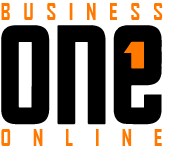Introduction
Retail marketing strategies are a key part of building a successful retail business. Retailers can use these strategies to grow their business, attract new customers and increase sales.
Create a Brand
A brand is a name, term, design, symbol or any other feature that identifies one seller’s good or service and distinguishes it from those of other sellers.
Brands are created by companies to differentiate their products from the competition. Brands help customers identify with your company through various marketing strategies such as advertising campaigns and product packaging. The better the brand you build for your business, the more likely you are to increase sales volume over time as well as garner loyalty among existing customers who may become repeat buyers because they trust what they see when they look at your product labels on store shelves or online websites.
Build Relationships
While you’re building your business, it’s important to keep in mind that relationships are what will help grow yours. Relationships are different than transactions: they build trust and create loyalty over time. This can be done through face-to-face interactions, as well as online platforms like social media or email marketing campaigns.
If you have a brick-and-mortar store or kiosk, then make sure to interact with customers regularly—but not just because they’re buying something! You must also spend time talking about other topics such as:
- What are their favorite products are
- How much they’ve enjoyed working with you (or not) over the years
- What else makes them happy/sad/etc., etc., etc…
Set up a loyalty program
A loyalty program is a set of customer-specific incentives that reward customers for their purchases. Loyalty programs can be used to increase sales and retain customers, as well as build brand loyalty.
The benefits of using a loyalty program include:
- Increased customer retention and satisfaction with your products or services
- Lowering costs by not losing out on repeat business through poor customer service, poor product quality or low sales volumes caused by lackluster marketing strategies
Disadvantages include: * The cost of implementing the program may be too high for some businesses (especially if they don’t have much money left over after paying the bills)
Measure Results
Measuring results is an important way to track how well your marketing strategies are working. You can use analytics tools such as Google Analytics or HubSpot Insights to get a real-time view of what’s happening with your website and social media channels. This will help you understand which actions are generating the most traffic, why people aren’t converting on the site (or not converting at all) and what areas need improvement.
You should also measure:
- The number of visitors coming to your site from search engines like Google and Bing
- The number of clicks each link gets when someone clicks through from an email newsletter or other type of content marketing piece
- How long it takes people to navigate around the pages before they leave them
Integrate Online and Offline Marketing
Online marketing is important, but it’s not enough. You need to integrate offline and online marketing strategies to reach your customers effectively.
Offline marketing has many benefits that make it more effective than online advertising:
- Offline advertising costs less and can be personalized at scale. It’s also more scalable—you can send out flyers or run ads on Facebook Messenger or Instagram Stories from one location rather than having an army of social media managers working around the clock to post content across all platforms in real-time (which is what most businesses do).
- Offline campaigns are sustainable because they don’t rely on Internet connectivity alone; people will respond positively if you contact them out-of-hours or give them something tangible like coupons, which makes this type of strategy very cost-effective over time too!
Engage Your Staff and Customers in Social Media Activities
Social media is a great way to connect with your customers and employees, but it’s also an excellent platform for engaging your community.
When you create a social media account, you’re not just reaching out to the people who visit your website or buy from one of your stores—you’re reaching out to anyone who has access through their phone. Social networks like Facebook and Twitter allow users to share content with friends and family members as well as strangers around the globe. This means that if you have a business that sells products in other countries (like hotels), then any time someone posts on one of these platforms about their trip abroad or shares photos from their vacation experience at one of those hotels they selected while browsing through TripAdvisor reviews before booking reservations at another hotel instead…it could lead them back into contact with YOU!
Develop an Email Marketing Strategy for your Business
Email marketing is a fantastic way to get your company’s name out there and grow your business. It’s cost-effective, easy to use, and lets you target potential customers based on their interests.
When it comes to email marketing strategies for businesses, there are many ways in which they can be effective. You can use email newsletters or e-newsletters as part of an overall strategy that includes social media posts and promotions on other websites. You may also want to consider creating an email marketing service so that interested parties can receive updates regarding new products or services from the company in question. For this type of service provider (ESP) system not only works well but also performs at optimal levels when it comes time to choosing who should benefit from receiving these communications via digital channels like emails!
Offer Promotions and Referral Programs
There are many ways to use promotions and referral programs to grow your business. For example, you could offer a discount or an incentive for customers who refer new clients. This can help build brand awareness, as well as increase sales by bringing in new customers. You may also want to reward employees or suppliers with incentives if they refer new customers their way.
You should also consider how you can incentivize your employees through referral programs so that everyone in your company knows about these opportunities and makes the most of them!
Create a Social Media Strategy to Grow Your Business.
Social media is a great way to build relationships with your customers, but it can also help you reach them in a more personal way. By creating content that is relevant to the interests of your audience and posting it on platforms where they spend time online, you increase your chances of having an impact.
Social media can be cost-effective for small businesses as well: according to Forbes magazine, using social media channels such as Facebook or Instagram can cost as little as $50 per month if you have fewer than 5,000 followers (think about how much money this saves over traditional advertising). This may not sound like much money when compared with other marketing strategies like direct mail campaigns or print ads—but remember: every dollar spent will bring results!
Use Analytics to Improve Your Marketing Efforts.
Analytics is a powerful tool for improving your marketing efforts. Analytics can help you understand your customers better, understand your competitors better and even help you understand your business better.
- Understand Your Customers: The first step in improving the effectiveness of any marketing strategy is to know who it is being marketed to—and where they are located. To do this effectively, use analytics tools that allow you to segment customers based on demographics or preferences like location or purchase history.
- Understand Your Competitors: Once you have a clearer picture of who’s buying from you and where they live/work/play, it becomes easier for retailers to identify their top competitors so they can learn from them as well as avoid similar mistakes made by those companies who came before them (or perhaps even beat them).
Retailers can build their business by creating a brand, building relationships and measuring results through analytics.
A brand is the sum of all your company’s relationships with customers. Your brand and loyalty program can be used to help you build relationships with customers, drive traffic to your store and help them buy more.
A loyalty program is an incentive scheme that helps people shop at a specific retailer over time by providing them with discounts, credits, or other benefits when they spend money there. Loyalty cards are also common ways for retailers to reward their customers for buying from them regularly – it’s like giving someone a gift card but without having to physically hand over anything! Email marketing campaigns are one-way retailers can communicate directly with customers via email – this could include newsletters or promotional emails offering special deals on products/services etceteras which may attract new business leads into stores across multiple locations nationwide.”
Conclusion
Retailers can build their businesses by creating a brand, building relationships, and measuring results through analytics. Staying ahead of the curve is essential in the ever-changing world of retail marketing. Failing to keep up with the latest trends and strategies can leave your business lagging behind the competition. However, while marketing techniques may evolve year after year, the core principles remain constant. Understanding the needs and wants of your customers and delivering a convenient shopping experience is key to driving sales and revenue growth. By implementing even just one or two of the tactics outlined here, you can make a significant difference in your customers’ experience. And when paired with robust retail point-of-sale software like eHopper, you can take your profits to new heights.







